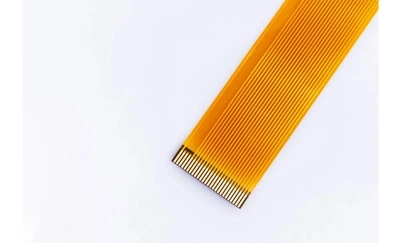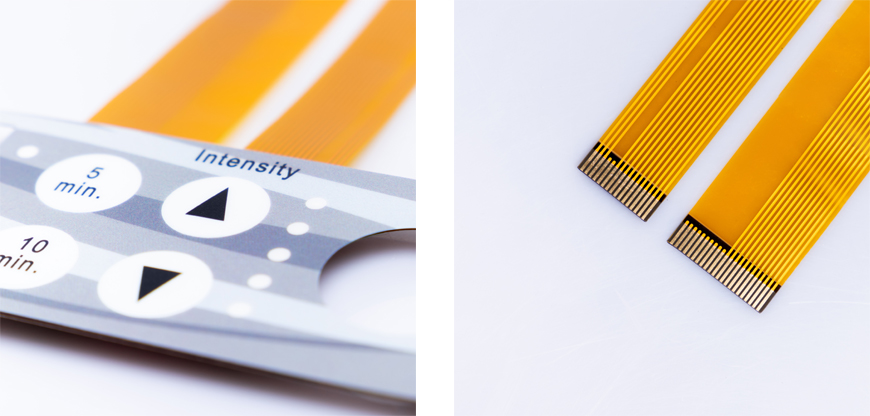
In the ever-advancing world of technology, innovation is the key to staying ahead of the curve. One such innovation that has been quietly revolutionizing various industries is the digital membrane switch. This article will take you on a journey through the world of digital membrane switches, explaining what they are, how they work, their applications, and why they are gaining popularity in today's digital age.

1. Introduction
2. Understanding Membrane Switches
· What Are Membrane Switches?
· How Do Traditional Membrane Switches Work?
· The Evolution to Digital Membrane Switches
3. How Digital Membrane Switches Work
· The Basic Components
· Conductive Layers
· User Interface Design
· Touch Sensitivity
4. Advantages of Digital Membrane Switches
· Enhanced Durability
· Customization
· Cost-Effectiveness
· Versatility
5. Applications Across Industries
· Medical Devices
· Industrial Equipment
· Consumer Electronics
· Automotive Technology
6. Why Digital Membrane Switches Are Gaining Popularity
· Seamless Integration
· Aesthetics and User Experience
· Enhanced Reliability
7. Challenges and Limitations
· Environmental Factors
· Complex Repairs
8. The Future of Digital Membrane Switches
· Innovations in Materials
· Internet of Things (IoT) Integration
· Artificial Intelligence (AI) Integration
9. Conclusion
10. FAQs
· What is the lifespan of a digital membrane switch?
· Can digital membrane switches withstand harsh industrial environments?
· How customizable are digital membrane switches for unique applications?
· Are digital membrane switches compatible with touchscreen technology?
· Can I retrofit my existing equipment with digital membrane switches?
In an age where touchscreens and user-friendly interfaces dominate our digital interactions, the humble membrane switch has evolved into a digital powerhouse. These switches, once limited to basic functions, are now an integral part of countless electronic devices and industrial equipment, silently facilitating our daily tasks.
What Are Membrane Switches?
A membrane switch is a low-profile, user-equipment interface that uses pressure-sensitive adhesives to control various functions. It consists of multiple layers, typically including graphic overlays, spacer layers, and adhesive layers, designed to respond to touch or pressure.
How Do Traditional Membrane Switches Work?
Traditional membrane switches rely on physical buttons or keys, which, when pressed, make contact with conductive traces beneath the graphic overlay. This completes an electrical circuit and triggers the desired function.
The Evolution to Digital Membrane Switches
Digital membrane switches take this concept further by replacing physical buttons with touch-sensitive technology. They are engineered to respond to the lightest touch, making them highly user-friendly and versatile.
The Basic Components
Digital membrane switches are comprised of several key components, including a graphic overlay, a printed circuit, spacer layers, and a backer adhesive. These components work together to create a seamless and responsive user interface.
Conductive Layers
One of the critical components of digital membrane switches is the conductive layers. These layers, often made of indium tin oxide (ITO) or copper, enable the switch to detect touch and transmit signals to the device's control system.
User Interface Design
The design of the graphic overlay is crucial for a positive user experience. It includes not only the visual elements but also the touch-sensitive areas that correspond to various functions.
Touch Sensitivity
Digital membrane switches are known for their exceptional touch sensitivity. They can detect even the slightest touch, making them ideal for applications where precision and reliability are paramount.
Enhanced Durability
Digital membrane switches are built to withstand harsh environments, including exposure to dust, moisture, and chemicals. Their sealed design ensures longevity and reliability.
Customization
These switches can be customized to fit the specific needs of various applications. From design aesthetics to functionality, digital membrane switches offer flexibility in design and application.
Cost-Effectiveness
Compared to traditional mechanical switches, digital membrane switches are cost-effective to manufacture and install. Their long lifespan and low maintenance requirements make them a cost-efficient choice.
Versatility
Digital membrane switches can be used in a wide range of applications, from medical devices and industrial control panels to consumer electronics and automotive interfaces. Their versatility makes them a popular choice across industries.
Medical Devices
In the medical field, digital membrane switches are used in various equipment, from diagnostic devices to patient monitoring systems. Their durability and ease of cleaning make them a reliable choice in healthcare settings.
Industrial Equipment
Industrial control panels and machinery often rely on digital membrane switches for their user interfaces. These switches can endure heavy use and harsh conditions without compromising performance.
Consumer Electronics
Smartphones, tablets, and other consumer electronics benefit from the sleek design and touch-sensitive nature of digital membrane switches, providing users with a seamless and intuitive experience.
Automotive Technology
Modern vehicles incorporate digital membrane switches into their dashboards and control systems. Their ability to resist wear and tear, combined with their responsiveness, enhances safety and convenience.
Seamless Integration
The compatibility of digital membrane switches with modern technology has led to their widespread adoption. They seamlessly integrate with touchscreen displays and control systems, enhancing user experiences.
Aesthetics and User Experience
The sleek and modern appearance of digital membrane switches adds a touch of sophistication to various devices and equipment. Users appreciate the intuitive touch interface, which improves overall satisfaction.
Enhanced Reliability
The absence of moving parts in digital membrane switches reduces the risk of mechanical failure. This increased reliability is a significant selling point across industries.
Environmental Factors
While digital membrane switches are robust, extreme environmental conditions can pose challenges. High temperatures, humidity, and exposure to chemicals may affect their performance.
Complex Repairs
Repairing digital membrane switches can be intricate and may require specialized skills and equipment. Preventive maintenance is crucial to ensuring their longevity.
As technology continues to advance, so do digital membrane switches. Innovations in materials, integration with the Internet of Things (IoT), and the incorporation of artificial intelligence (AI) are on the horizon, promising even more capabilities and applications.
In a world where touch and convenience reign supreme, digital membrane switches have emerged as reliable and versatile interfaces. Their seamless integration, durability, and user-friendly design have positioned them as a cornerstone of modern technology.
1. What is the lifespan of a digital membrane switch?
Digital membrane switches can last for several years, depending on usage and environmental factors. Proper maintenance can extend their lifespan.
2. Can digital membrane switches withstand harsh industrial environments?
Yes, digital membrane switches are designed to withstand tough industrial conditions, including exposure to dust, moisture, and chemicals.
3. How customizable are digital membrane switches for unique applications?
Digital membrane switches offer high customization levels, allowing design and functionality to be tailored to specific applications.
4. Are digital membrane switches compatible with touchscreen technology?
Yes, digital membrane switches can be seamlessly integrated with touchscreen displays and control systems.
5. Can I retrofit my existing equipment with digital membrane switches?
Retrofitting existing equipment with digital membrane switches is possible, but it may require professional installation and customization.